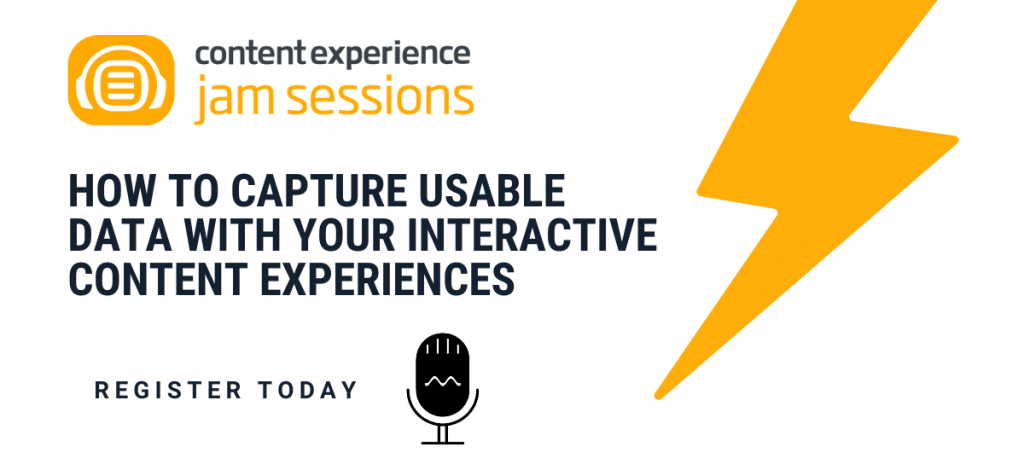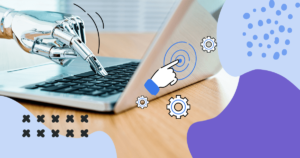In the wonderful world of Data-Driven Marketing, strategies are being guided by data and created based on the information you’ve gathered on a specific group of people.
Sometimes the difference between both of these words — data and information — is pretty clear to professionals, and sometimes not.
Colloquially, is common to use them as synonymous in sentences, but when you’re talking to a Data Scientist or planning a Data-Driven Marketing effort, you need to know the difference.
That is why we made this post: to help you build your data literacy by answering a few questions:
- What Is Information?
- What Is Data?
- So, what is the difference between data and information?
- Ok. But is there a difference between data, information, and knowledge?
- Why Is Data Important For Your Business?
- Wrap Up: Information Is Data Put Into Context
Let’s get to it!
What Is Information?
When it comes to businesses, there’s no better way to define information than the one you find in the dictionary.
Information is facts provided or learned about something or someone. We can make that even simpler by using an equation:
| Data + Meaning = Information |
In Data-Driven Marketing, information is data that has already been processed to become meaningful and useful.
It has been looked upon in a contextual manner, cleaned up, organized, and identified as useful for a business.
Therefore, we can think of information as interpreted data, and that would be the best way to understand it.
Let’s look at a practical example.
Think about the following set of data: 98, 37, 76, and 45. What does that mean to you?
Without context, those numbers can mean any sort of thing and therefore are not information.
But what if we tell you that those numbers are test scores received by a group of students from the same class?
Still, that is not enough to determine what this information means. While it gives context to the numbers we referred to, there’s no way to tell how much the students should have scored to obtain a perfect grade, right?
Information is telling you that, among those four scores, the average test score was 64%.
Knowing this, you can infer that:
- The first student did well.
- The second and the fourth were well below average.
- And the third was just above it.
Information is what businesses look for when they analyze a set of data. But information is hard to obtain and, looking at the following topic, you will understand why.
What Is Data?
Now that we’ve covered what information means, let’s try our luck with the second definition.
Data is a collection of details that can be analyzed and transformed into information, by contextualization and inference.
It can also be stored in the form of figures, texts, symbols, descriptions, audio, or video.
Opposite to the concept of information is the fact that data is raw: it hasn’t been worked on and therefore has very little value in decision-making.
It’s only after we process it that data becomes something useful for businesses.
There are two main types of data: quantitative and qualitative. The first one is a number, the second one a description.
But we can also classify data in another way, separating internal data from external data.
- Internal data would be something like the name of your employees.
- While external data would be how many people live in New York City.
The first was gathered by your own team and the second was gathered by an external source.
Because data is such a vague concept, it’s hard to tell what a company can do with it.
Without context, you can have all the data in the world and not generate a single piece of intelligence. That’s why it is so important to add meaning to data.
But before one can do that, one must first organize their data.
↳ This process, know as ETL (Extract, Transform and Load), is used often by companies to make sure the information they have is trustworthy and reliable.
Cleaning up data ensures there are no duplicates in your dataset and that every single piece of it is organized the way it should be.
Because of this, computerized systems can analyze this data, provide contextual clues, and generate that powerful thing we are looking for: information.
So, what is the difference between data and information?
Don’t worry if you haven’t got what data and information are on your first attempt at distinguishing both.
Many business people are still confused by the meaning of these two words even after relying on data to make informed decisions for some time.
What you must always keep in mind is that “meaning” is the answer to “what is the difference between data and information?”.
A collection of data doesn’t have any meaning by itself. It is after we give it meaning that data becomes information.

Ok. But is there a difference between data, information, and knowledge?
Good question.
Now that you know that data is facts and figures that relate to something specific but not organized, and information is contextualized and categorized data, what does knowledge mean in a business context?
We call knowledge the know-how and understanding a business can only get through insight and contextualized information.
Then, if a bunch of numbers is data, what those numbers mean is information. Knowledge would be what you can do with said numbers, given your experience and understanding of this contextualized information.
Imagine that you know the average score for students in a test is 64%.
Knowledge then would be the ideas you might have on how to get this number up, like extra classes or a remedial test a teacher might apply to get such results.
Why Is Data Important For Your Business?
Ready to see some examples of how a well-managed data strategy can get your business ahead? Check out our list.
1. Data contributes to faster decisions
In a study conducted by Bain & Company, that looked at over 400 organizations, companies are five times more likely to make decisions faster when they use data.
We’re talking about looking into such things as the number of customers they have and their commonalities, and how it all generates valuable information.
To attain better business decisions is the first reason most companies look into their data.
2. Data helps you understand customers
This one seems obvious, but customers are really hard to read. That’s why the more you look into their data the better.
Their patterns of consumption, preferences, and behaviors can tell your business a lot about how to communicate with them and make them chose your product.
Some of the data analyses to do so can be found on their social media profiles, on how they reached your company with Google Analytics.
Other profiles demand a more rigid search, like a user survey.
In the end, it matters how you get your hands on their data and how reliable it is.
That’s because in turning that data into information, you will want it to be as polished as possible, so the final product can generate real actionable insights.
3. Data can improve your products
Companies can implement data and information in its processes by looking at customers’ opinions on its products.
This approach will help you create solutions that are in tune with the market and bring value to clients.
You can analyze information such as pain points and products your customers already tried and weren’t as helpful as they thought it would be.
The objective is, of course, to find new and exciting opportunities for your audience.
4. Data helps with fraud prevention
You’ve probably heard about Big Data, right?
These large chunks of data collected by companies and ready to be turned into actionable insights using appropriate software can be leveraged in many ways.
One of the most popular of them is fraud detection.
Companies such as American Express and Visa use real-time big data to analyze billions of transactions on a minute-by-minute basis in order to identify potential credit card fraud and other issues.
Their systems can combine internal and external data in order to make the best-informed choice in each transaction to minimize business losses.
5. Data makes customization easier
Personalization and recommendation algorithms are transforming the way we consume content.
That is possible because of really intelligent systems that analyze tons of data on customer behavior to make sure the audience is getting all the content they might be looking for in a convenient way.
Companies like Netflix, Amazon, Youtube, and Spotify are using that kind of technology to understand their public in a profound way — creating some pretty good customized experiences in the process.
Wrap Up: Information Is Data Put Into Context
As you could see, data and information can be leveraged in many ways in the business world.
That’s why you want to get ahead of those concepts, so you can start building systems that use them to their benefit.
Now that you know what the difference between data and information is, how about start applying those concepts?
Download our free ebook on Market Intelligence and learn how your company can stand out from the competition using data!








